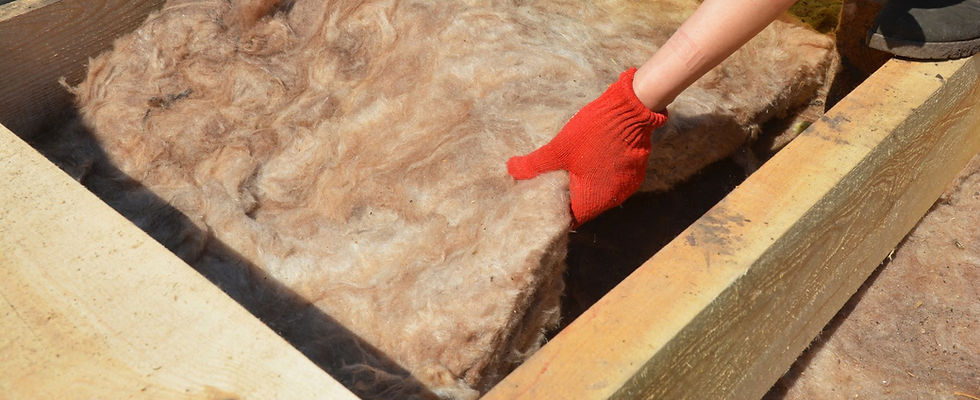Floor Insulation

Floor insulation is a important fabric improvement for rental properties, especially those with suspended timber floors or solid floors prone to heat loss. Proper insulation reduces the amount of heat escaping through the floor, improving energy efficiency, raising EPC ratings, and enhancing tenant comfort by keeping feet warm and reducing cold drafts.
For landlords, floor insulation not only helps meet the minimum EPC standards but also contributes to a healthier, warmer home environment that attracts and retains quality tenants.
Why Insulate Floors?
Uninsulated floors, particularly suspended timber floors, can account for approximately 10% of a property’s heat loss. This heat loss results in higher heating bills and colder living spaces for tenants. Floor insulation creates a thermal barrier that reduces this heat escape, helping properties achieve better EPC ratings and lowering energy costs.
In older properties, floorboards can also become draughty or allow moisture to rise, which can cause condensation and contribute to damp issues. Adding insulation beneath floors or under floorboards helps reduce these risks and enhances overall property condition.
Regulations and Financial Support
Government schemes are in place to encourage landlords to improve floor insulation, offering grants and financial aid to offset installation costs.
Available grants and funding:
-
The Energy Company Obligation (ECO4) scheme supports floor insulation upgrades for eligible properties, predominantly targeting low-income tenants and vulnerable households.
-
The Great British Insulation Scheme (GBIS) may also provide grant funding for floor insulation among other fabric improvements.
-
Some local authorities or regional bodies offer additional grants or incentives for landlords.
-
Eligibility typically depends on factors such as EPC rating (commonly D or below), tenant benefits status, and council tax band.
-
These grants can cover a significant proportion of the typical installation cost, which varies depending on floor type and property size.
Types of Floor Insulation
Suspended Timber Floors:
One of the most common floor types in older UK properties. Insulation is usually installed between the floor joists underneath the floorboards. Materials such as mineral wool or rigid insulation boards are used to fill the gaps and prevent heat loss. It is essential to ensure adequate ventilation in the crawl space to avoid damp issues.
Solid Floors:
Often found in basement or ground floor properties, solid floors conduct heat into the ground. Insulation here can be installed on top of or below the floor surface, depending on whether the floor is being renovated or replaced. Solutions include rigid insulation boards beneath screed or floating floor systems fitted with insulation.
Insulation of suspended floors is often completed in a day or two, with minimal disruption to occupants, while solid floor insulation is usually part of larger refurbishment works.
Benefits to Landlords
Floor insulation can enhance EPC ratings by reducing one significant source of heat loss. It improves tenant comfort by eliminating cold, draughty floors and lowering heating bills, which can reduce rent arrears and increase tenant retention.
Well-insulated floors also help prevent condensation and damp, reducing maintenance and repair costs over time. Environmentally, this upgrade cuts carbon emissions and supports the nation’s net-zero commitments, a growing consideration for landlords
Common Questions and Concerns
-
Is underfloor access needed? Suspended timber floors usually require accessible crawl spaces or cellars for insulation installation.
-
How disruptive is installation? Suspended floor insulation is typically quick and unobtrusive, while solid floor insulation is more involved.
-
Can flooring coverings impact insulation? Some floor coverings can reduce insulation effectiveness; installers will consider this during planning.
-
Is floor insulation suitable for all properties? Solid floors without underfloor space are best insulated during renovations; timber floors are generally easier to insulate.
Getting Started
Begin with a professional survey to determine floor type and insulation suitability. An accredited installer can advise on the best insulation materials and techniques for your property.
Check eligibility for grants and government support to reduce upfront costs. Proper documentation, including EPC reports and tenant data, may be required for funding applications.
Following installation, have an EPC reassessment carried out to update your property’s energy rating and communicate improvements to tenants to help them maximise benefits.
For retrofit recommendation, check grant eligibility and connect with qualified installers, landlords can register for eco-Landlord and take the next step toward a more energy-efficient rental property.